

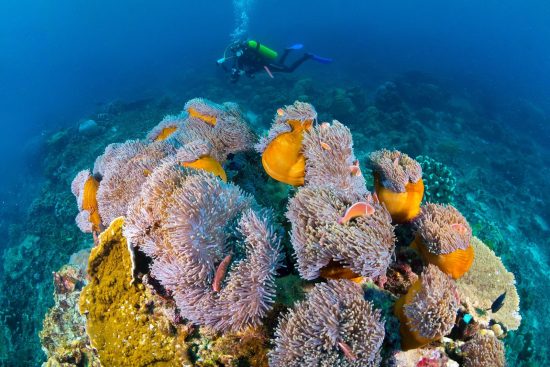
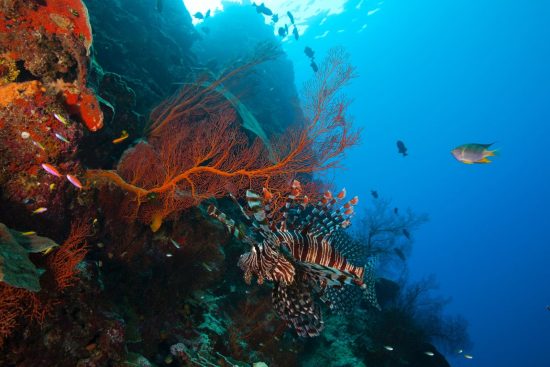
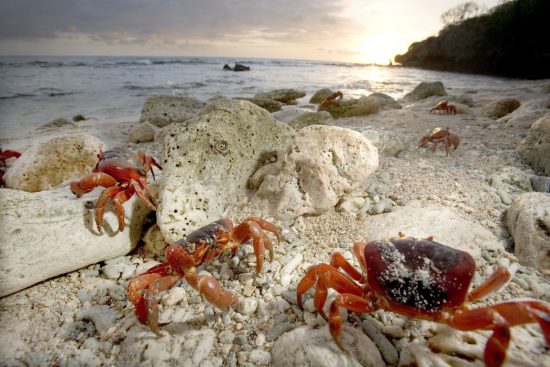
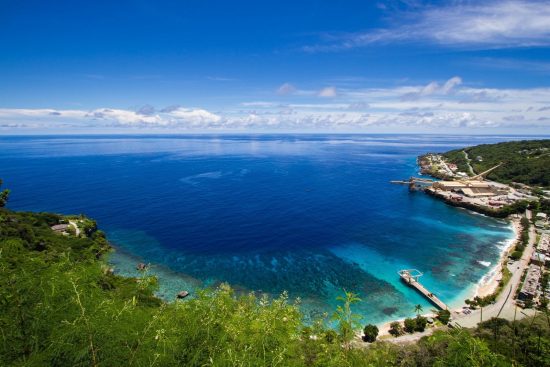
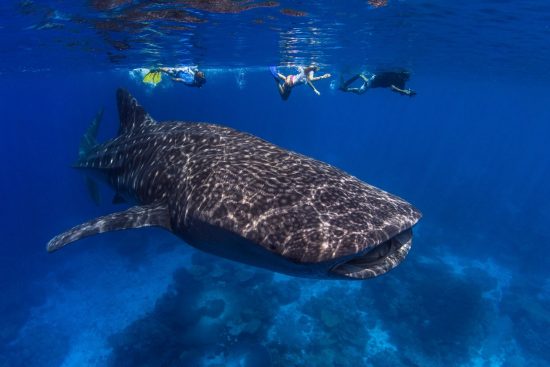
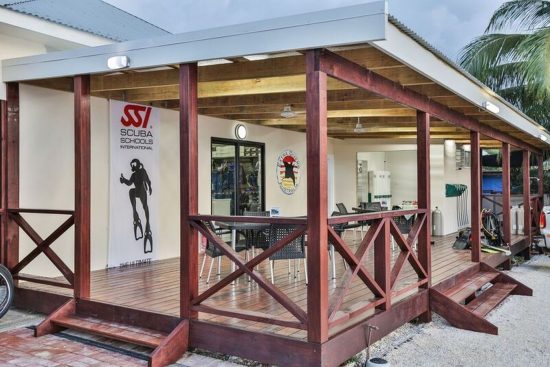
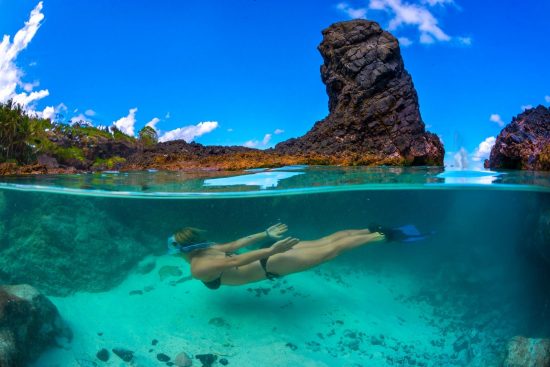
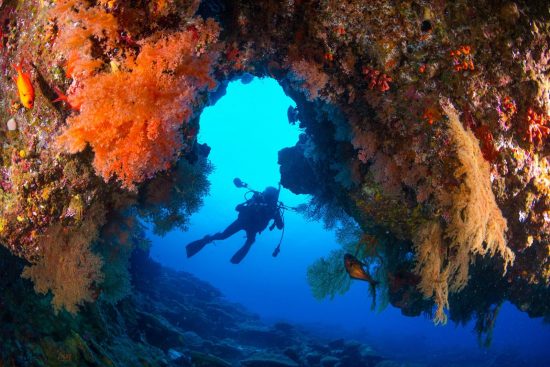
Meeting whale sharks instead of Santa Claus
Once upon a time, there was an island, remote and distant from the rest
of the world. Despite not having a large dive centre, it was one of the
best diving spots in the world. Its isolation ended in September 2016 –
with the fulfilment of a vision that had started six years ago.
Standing almost perpendicular, the steep walls crash down to a depth of
4,000 metres. Large gorgonians flash their fans out into the open
water, with perches all around, as a gray reef shark swims several
metres below. If you are lucky, you will have tiger sharks and
hammerheads for company. Of course, the white-tip sharks and whale
sharks will be there as well, if one visits Christmas Island between
December and March. When these gentle giants come visiting during a
dive class, they would simply (and gently) push aside any divers in the
water at that time. As many as thirteen whale sharks have bee spotted
in four days alone – that's more than what most divers get to see in a
lifetime!
The problem with such a diving paradise is only that in practice, it
often isn't. Things are not as what's seen in the advertisements, nor
in some dive magazines. If a country like Cyprus (which does not have
any fish) is called a diving paradise, how should one name a region
like Christmas Island? Put five exclamation marks behind it, ala Til
Schweiger?
Well, Christmas Island doesn't need any exclamation marks at all. The
underwater scene is as we have described above: untouched, full of fish
and lots of sharks. However, its lack of prominence in the European
dive circles in the earlier days has little to do with the quality of
the dive spots. Rather, it was the long travel times and the lack of
logistics (The continent being about 2,500 kilometres away).
Till one day, a European appeared on the scene with a vision.
It took Walter Harscher six years to get his proposal off the ground.
He owns a chain of dive centres as well as Germany's largest dive travel organiser. Tough as it might have been, since
his first day on the island, he was determined to set up his dive
centre there.
His SSI dive centre, opened in September 2016, now caters to a maximum
of 25 divers at a time. With him, they will discover a place that must
be one of the world's most exhilarating (even without the crabs).
None
of the larger sea creatures show any signs of shyness. Here, the diver
is not an intruder, but a welcome guest. This is equally true for the
scalloped hammerhead, which make their appearance during the second
dive. For three to four minutes, the curiosity is satisfied – at least
on the part of the hammerhead sharks, which then swim off into the
endless blue yonder.
The Crabs of Christmas Island
The crabs are found only here and on the neighbouring Cocos Islands.
There are over 40 million of them; and when they come out of the jungle
in November to lay their eggs, Christmas Island literally turns red.
Then there are the whale sharks, for whom the freshly hatched crabs is
a protein snack.
“For whale sharks, the tiny young animals are great to
eat,” said Sandra Yoshida, a dive instructor at Extra Divers. “They
contain a lot of protein and are easy to catch. As fish up to twelve
metres long, they just have to swim slowly through the soup with their
mouth wide open.”
Christmas Island has everything needed to become a prominent dive
destination. It is a pristine tropical paradise above water; and a
pristine underwater paradise – with sharks, rays and large fish galore.
For divers, it is truly a dream island, with many areas still yet to be
unexplored.
Very much like what we have in Cyprus ;-)
 Herbert
Herbert 30th December 2016
30th December 2016 Christmas Island
Christmas Island 